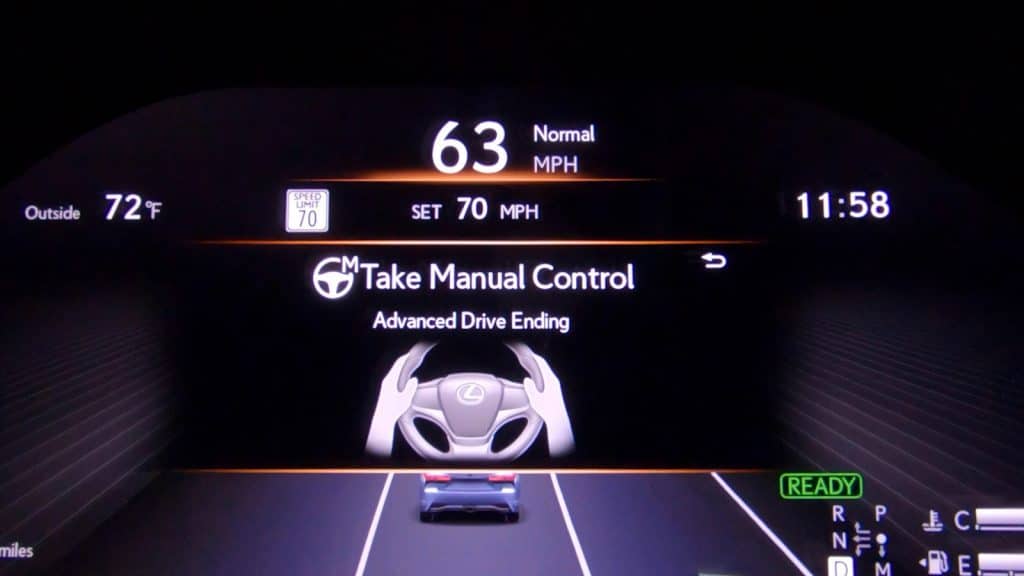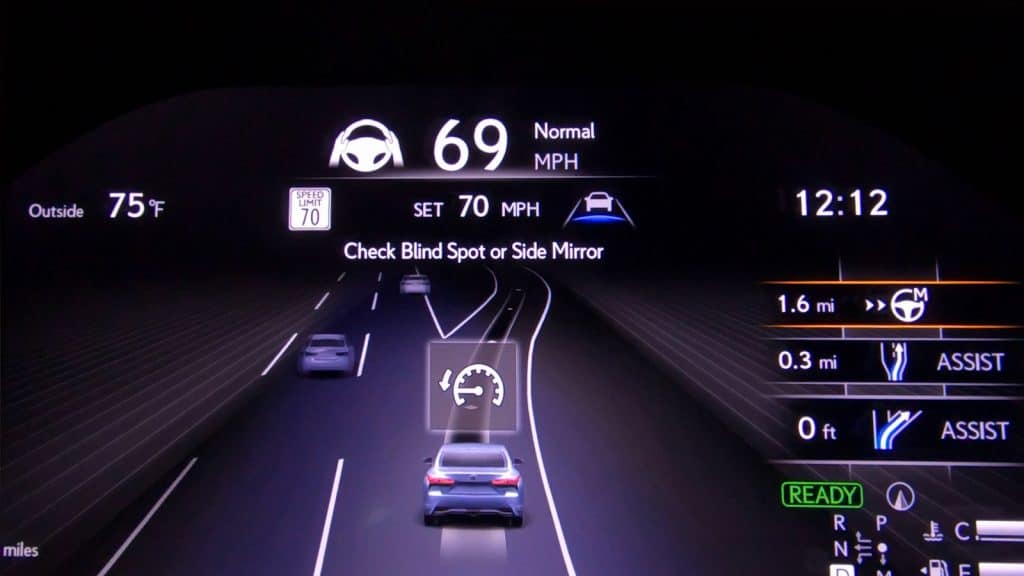In a race to join the world’s largest automakers become a front-seat driver, Toyota announced a new driver-assistance system named “Teammate,” which would compete against similar systems such as General Motors’ Super Cruise and Tesla’s Autopilot.

Teammate will first be offered on the 2022 Lexus LS 500h with all-wheel drive, which hits dealership this fall.
The driver-assistance systems offered by most automakers are little more than adaptive cruise control paired with lane-keeping assistance. While GM and Tesla’s are somewhat more advanced, none of them are truly autonomous driving systems, no matter what marketing mavens or your local Tesla fanboys tell you.
Not a single one will handle all of the driving without your attention; driver input is still required. In reality, all of these systems support the driver, much like having your nagging mother-in-law along for the ride in the passenger seat — if she only flashed dashboard lights and chimed and buzzed, rather than making sarcastic comments.
Refreshingly, Toyota makes no claims of autonomy, which is why this system wears the name Teammate. It’s Level Two autonomy, meaning that it can control steering, acceleration and braking, but the driver must remain in control.
So, consider it your microchipped co-driver, one that assists in controlling the speed and steering of the car, and can change lanes as well — much like its top competitors. Also, like other systems, Teammate works on interstates and freeways; secondary roads will come later.

How Toyota Teammate works
Using a combination of lidar, radar, maps and cameras, Teammate maintains an appropriate following distance, can overtake other vehicles, and, if a destination is entered into the navigation system, plan your driving route for up to six miles, including lane changes or overtaking slower vehicles.
Toyota goes to great lengths to clarify that it is not an autonomous driving system, but a driver-assistance system, one that the driver always supervises — and with good reason. The system calls for far more driver interaction than similar systems offered by other automakers.
Before Teammate is engaged, a message on the right side of the instrument cluster will state, “vehicle position initializing,” indicating that the vehicle realizes its place on the map. Once that’s done, the instrument cluster message states, “radar ready” before changing to “advanced drive ready.”
Then, the driver presses a button on the right spoke of the steering wheel. The instrument cluster displays animation of the vehicle in its lane on the roadway, showing other vehicles in other lanes. It also displays the car’s brake lights and turn signals when they are activated.
Of course, none of this works without the assistance of the infrared camera mounted on the steering column that monitors the driver’s face, facial position and eyes to ensure they’re open and you’re paying attention. The camera functions even if you’re wearing sunglasses, although some infrared blocking glasses prevent the system from working, as do COVID-19 masks.

Now you’re ready to use Teammate.
Hands free, but not attention free
Now that the system is activated, you’ll need to glance at the instrument cluster. If the road you’re driving on is not in the system, the lane marking in the instrument cluster graphic is gray, and a small illuminated icon shows a hand on a steering wheel, indicating the driver should maintain total control. Once the road is recognized by the system, the line marking on the road graphic changes from gray to blue, and you can take your hands off the wheel.
But it doesn’t last very long.
Like other systems, your hands are off the wheel for, at most, three miles before the system requests you put your hands back on the wheel. In that, it’s like other systems. Unlike other systems, it will warn you ahead of time that you’ll only be hands free for another mile or two by an orange message on the instrument cluster and an audible bing. Once the driver takes the wheel, they are in control and the system no longer intervenes.
Teammate also changes lanes, although it’s not hands free as in other systems. To initiate a lane change, the driver hits the turn signal, and the system checks the lane to ensure it’s clear. The infrared cameras also watch to make certain you glance at your side mirror to ensure the lane is clear.
Once you do, and the lane is clear, the car will steer into the lane, but the driver must have their hands lightly on the wheel. In other systems, the driver’s hands remain in their laps as the steering wheel rotates left and right on its own.

Notably, Teammate can suggest lane changes. Say you’ve put a destination in the navigation system, and you’ve just changed lanes, from the right lane to the center. But now, you’re 1.5 miles from your exit. The car will suggest a lane change and initiate it if the road is clear.
If you’re taking a fork in the road, and not an exit, and Teammate is driving, it will warn you in advance to put your hands on the wheel. The car will continue steering, so you’ll only require a light touch. But Toyota has engineered it so that there’s an extra layer of assistance — yours — should the system not function as intended. Remember, this is Level Two autonomy.
What we think
On the surface, Toyota’s system performs the functions that its competitors do, allowing the driver to drive hands free for a few miles, and change lanes on its own. But in reality, the system demands far more driver involvement than other technologies, and at times, the many steps needed to keep the system functioning distract the driver.
Additionally, changing lanes autonomously takes far more time than merely executing it yourself. In total, Teammate requires the driver to remain involved with driving. This may improve safety on paper, but in the real world, it calls for drivers to alter their driving habits, perhaps too much so.

Toyota would refute this by saying this is why it’s not called an autonomous driving system, and this is true. But how consumers perceive it is another matter. Toyota may say one thing, but car buyers will see another. And when compared to competing systems, there are too many steps to make it work. Hand-free suggests something effortless; something explainable in a couple steps. This is not because it isn’t.
Currently, these driver-assistance systems are a novelty, the automotive equivalent of a party trick. Sure, having the car take command for a couple miles may be momentarily relaxing, but no more so than automated cruise control, which does so for far longer.
Plus, steering in stop-and-go traffic or at speed on a freeway — Teammate’s big advantage — isn’t that stressful. The only difference from these systems is that Teammate can monetarily steer and change lanes. They are advances, but not enough to merit paying extra to get them, at least not in their current form.
Is the technology remarkable? Sure.
But we’re nowhere near true autonomous driving yet. Systems such as Teammate are an automotive amuse-bouche; that small single bite of something scrumptious the chef sends out before the main course arrives. In this case, the automotive main course is still a decade away.
Hope you’re not hungry.

